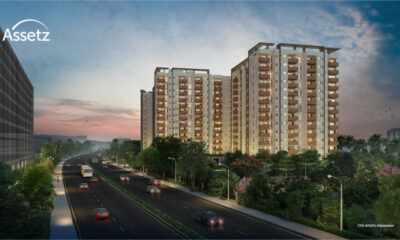Guest Column
Development Norms For Differently-Abled & Senior Citizens


Piyush Gandhi, National Director – Project & Development Services, JLL India
Do the current construction norms require real estate developers to make specific provisions for the differently-abled, disabled and senior citizens? They do – but as is still the case in many areas of the Indian real estate industry, sufficient implementation lags seriously behind the on-paper regulations.
The Model Building Bye-Laws 2016 (Chapter 8), IS Code 4963, CPWD guidelines for Barrier-Free environment give a very detailed design and planning guidelines to provide a barrier-free environment for differently-abled and elderly people. In fact, they have a dedicated chapter on design provisions to be incorporated in any building for public use for differently-abled and elderly people.
The provisions required include but are by no means limited to:
- Parking on the ground floor
- Wheel chairs (motorised for ease) with ramps and access to all areas
- Hand rails
- Easy signage for the hearing-impaired
- Braille signage for the visually impaired
- Elevators with hand rails and easily accessible switches
- Special toilets and easy access to them
- Faster lift door opening time
- Adequate sitting areas for the elderly
- All important buttons and switches at low height
- Evacuation route and refuge provisions
Building bye-laws are legal tools used to regulate architectural design and construction factors of buildings to achieve orderly development. They are essentially mandatory, and are meant to protect buildings against earthquakes, fire, noise, structural failures and other hazards.
A Long Way To Go
In India, there are still a number of small and mid-sized towns which do not have building bye-laws. In the absence of any regulatory mechanisms, such towns are confronted with haphazard development which results in chaotic conditions and inconvenience to property users. The recently-announced Model Building Bye-Laws 2016 are intended to establish guidelines for the benefit of State Governments, Urban Local Bodies (ULBs), Urban Development Authorities, etc. and are an improvement over the previous Model Building Bye Laws brought out in 2004.
Indian construction needs much change in approach when it comes to differently-abled and elderly-friendly real estate developments. The change required is more in terms of making real estate developments disabled-friendly in the true sense, and beyond mere compliance for records purposes. The scenario is better for metros, and especially in popular retail areas, but the second tier of cities and towns are far behind.
Need To Heed The Market
Similarly, the implementation of the norms needs to be more effective in office complexes and residential areas. The Indian developments and construction industry needs to recognize the importance – in fact, the business importance – of detailed planning and efficient execution to make any real estate development for public utility, or for use by a large number of people, disabled and elderly-friendly.
When we look at the developed world, we witness the high level of ease and convenience that disabled, differently-abled and senior citizens are afforded in those countries. It is encouraging and heartening to see such citizens taken care of by building provisions or property management teams. In fact, the positivity and trust created by such efforts makes a lot of business sense in terms of the success of such projects. This group forms 8-9 % of our population base, and therefore any development which is friendly to them will attract this group along with their family and larger support groups.
-



 News3 weeks ago
News3 weeks agoKW Delhi 6 Mall Onboards New Brands
-



 News4 weeks ago
News4 weeks agoManasum Senior Living Launches IKIGAI GOA, A Senior Living Community in North Goa, in collaboration with Prescon Homes
-



 News2 weeks ago
News2 weeks agoGodrej Properties Sells Rs 3k cr+ Homes of Godrej Zenith, Gurugram, within 3 days
-



 News4 weeks ago
News4 weeks agoBridging India Divide: Top 5 Tier- 2 Cities to Focus On
-



 News3 weeks ago
News3 weeks agoCommercial Realty Gets Tech Savvy: Fast Construction, Enhanced Convenience
-



 News4 weeks ago
News4 weeks agoMultipoint Connection – A Definite Boon
-



 News3 weeks ago
News3 weeks agoRBI’s Status Quo on Key Policy Rates to Help Maintain the Real Estate Growth Momentum, Say Industry Stalwarts
-



 News1 week ago
News1 week agoOlive Announces Dhruv Kalro as Co-Founder




























